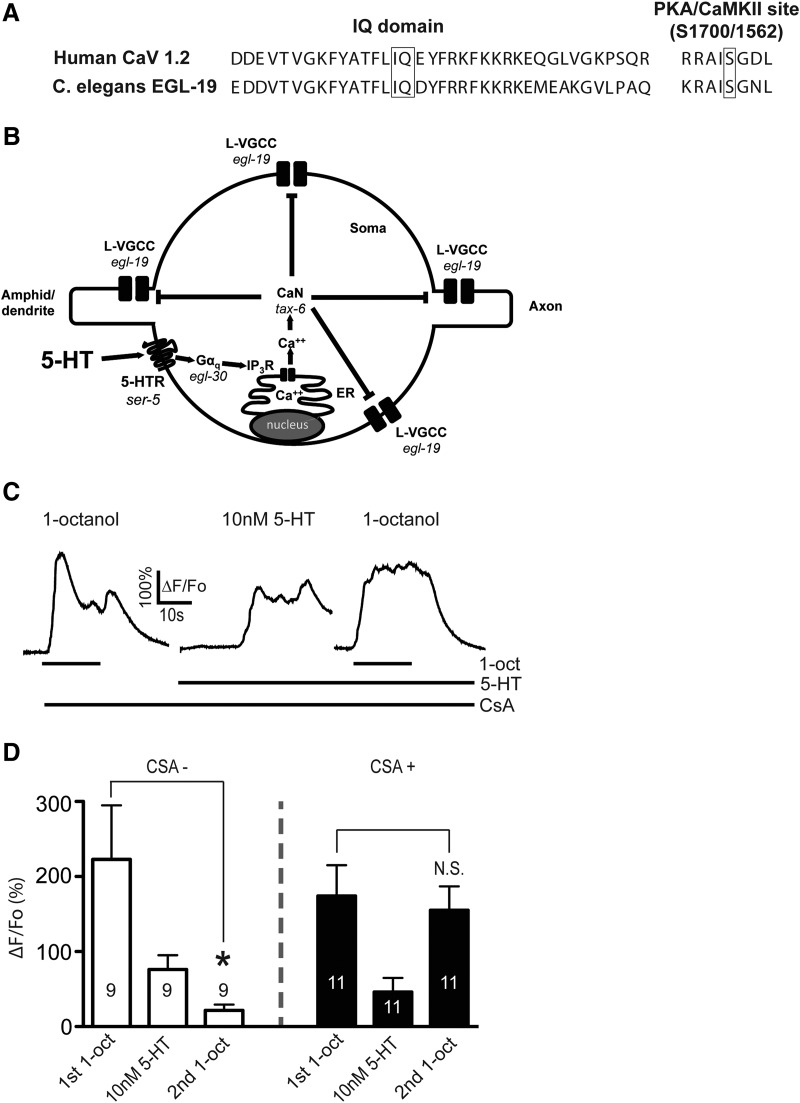Figure 3.
CaN is required for 5-HT inhibition of 1-octanol-evoked Ca2+ signals in ASHs. A, The conserved IQ domain and the calcineurin dephosphorylation site are present in the C. elegans EGL-19 L-VGCC (human CaV 1.2 sequences shown for comparison). B, Hypothesized signaling pathway in which 5-HT activates Gαq signaling, Ca2+ release from intracellular stores, calcineurin (TAX-6/CaN) activation, and inhibition of the EGL-19 L-type VGCC. C, Representative traces of sequential 1-octanol and 5-HT exposures of CsA-treated worms. Left, Initial 1-octanol-stimulated Ca2+ response. Middle, 5-HT-stimulated Ca2+ response. Right, Second 1-octanol-stimulated Ca2+ signal. Bar below trace represents duration of ligand exposure. D, Amplitudes of initial 1-octanol, 5-HT, and second 1-octanol responses in untreated wild-type (white bars, reproduced from Fig. 2G). *Significantly different from control (10 nm 5-HT-treated second 1-octanol response vs untreated, p = 0.0214, t = 2.852, df = 8, paired t test) and CsA-treated wild-type ASHs (black bars). N.S., Not significantly different from control. CsA treatment does not significantly change 5-HT-evoked Ca2+ signals (p = 0.2814, t = 1.111, df = 18). Numbers in/above bars indicate n. Data are mean ± SEM.

